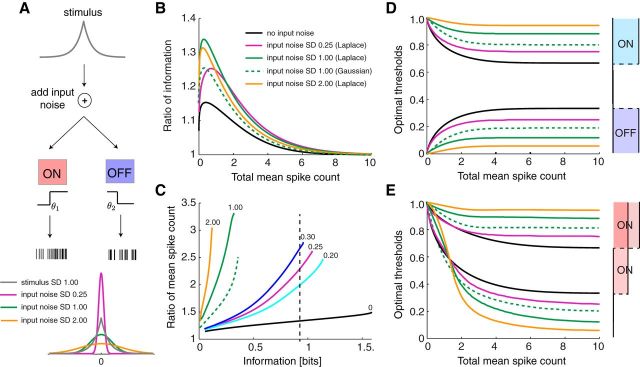Figure 7.
Input noise increases the benefits of ON–OFF splitting. A, Top, Input noise is added to the stimulus before the nonlinearities. Bottom, Distribution of stimulus (Laplace) and input noise (Gaussian with different SDs). B, Ratio of information transmitted by the ON–OFF versus ON–ON systems when constraining the total mean spike count. Input noise increases the benefit of the ON–OFF system but non-monotonically. In this and subsequent panels, the dashed green line demonstrates the results for a Gaussian stimulus distribution with input noise SD 1 (compare to the full green line for the Laplace stimulus distribution with SD 1). C, The ratio of total mean spike count needed to transmit a given information by the ON–ON versus the ON–OFF system, computed for different values of the noise SD. For instance, to transmit 0.9 bits (dashed black line), the ON–ON scheme needs twice more spikes at input noise SD 0.2 and 2.75 times more spikes at input noise SD 0.3. D, The optimal thresholds in the ON–OFF system get pushed toward the tails of the distribution as the input noise increases. E, The optimal thresholds in the ON–ON system are also distributed at the two tails of the distribution for large spike counts but cluster at one end of the stimulus distribution for low spike counts.

